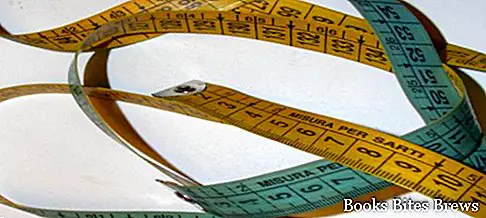Discover here everything you need to start sewing, necessary tools and materials to buy in order to easily dedicate yourself to this ancient but still current art.
Dressmaker kit
belt fitting
Useful tool to pass elastics, threads or bows through the buttonholes.
Carbon paper and notched tracing wheel
They are used together to trace on the wrong side of the fabric of the signs.
It is better to choose carbon paper of a color as similar as possible to that of the fabric and always use the white color on white fabric, in order to have a soft line as a result.
Pictogram pens
They can be used on fabrics with a harder surface, as they are easily erased with the help of a sponge.
The marks traced by the invisible ink pens simply erase with water or disappear on their own after a few days.
The tracing pens can be used to go over a design on waxed paper, which prints it on fabric when the iron passes.
Adhesive retina
It is a strip of glue available in various sizes, useful for gluing two parts of fabric without smudging.
The thinner strips are used for hems and linings, while the wider ones are used for applications.
Needles
The pointed needles of medium length are used for the basic seam, while the shorter ones for the quilt, having the round eye, are suitable for jobs that require greater precision.
For needles, a classification based on thickness is commonly used, with a scale ranging from one to ten, where ten is the minimum thickness.
Recommended readings- How to easily whitewash a room in the house
- How to make the perfect turn-ups for pants
- Gift ideas: what gift to make, where to buy
- How to make demineralized distilled water for iron
- How to eliminate ants naturally from the garden and from the house
Pincushion
This object has the function of keeping the pins and needles you are using close at hand, a wrist pincushion, for example, is extremely useful when working on a dress.
Pins
Pins of all shapes and sizes are available on the market, the common ones are used for normal sewing work, while the lace ones are used with delicate fabrics.
The pins with the rounded tip are suitable for synthetic fiber fabrics.
The pins with the colored head have the advantage of being more visible on the fabric.
Ribbon for quilt
It is a 5 mm wide adhesive tape, designed to add seam allowances in the quilting works.
Turn-rouleau
Useful metal tool used to turn the fabric rollers of the rouleau rings upside down.
Safety pins
This type of pins is extremely useful for holding layers of heavy fabric together, as they are safer than normal pins.
Scissors
You need a pair of large scissors to cut, a pair of medium scissors to finish the contours or cut small pieces of fabric, and a pair of small, pointed and sharp scissors to precisely follow the curves or proceed to cut the corners.
It is not recommended to cut the paper with tailor's scissors because the blade could be irreparably damaged.
The scissors with the zigzag blade are used to trim the edge of a fabric, to prevent it from fraying.
Tagliapunti
It is a small cutting tool used to remove incorrect seams or to create buttonholes.
Measuring tape
The real measuring tape shows the measurements in centimeters and inches on the same side, to allow immediate comparisons.
It is advisable to purchase one of 150 cm with metal coated ends.
Tailor's chalks
They are used to trace temporary marks on fabrics.
With a pair of medium scissors, it is better to keep the tip sharp and, before using it on the right side of a fabric, test it elsewhere, so as to be sure that the sign does not go away.
Thimble
It is worn on the middle finger of the hand with which it is sewn, it serves to prevent unwanted punctures with used needles.
Wire
It is recommended to use a thread color equal to the fabric or slightly darker.
For best results it is better to use a thread made of the same fiber as the fabric.
The thread used for basting is cheaper and of lower quality.
Use a linen thread for the buttonholes, while a stronger thread is recommended for furnishing fabrics and quilting.
Tissue paper
By machine working with delicate or very thin fabrics, it is advisable to put strips of tissue paper on each side of the fabric, which will be removed once the sewing work is completed.
Tissue paper is also useful for lengthening or modifying the model of a garment, as well as for transferring the designs to be used for embroidery.




